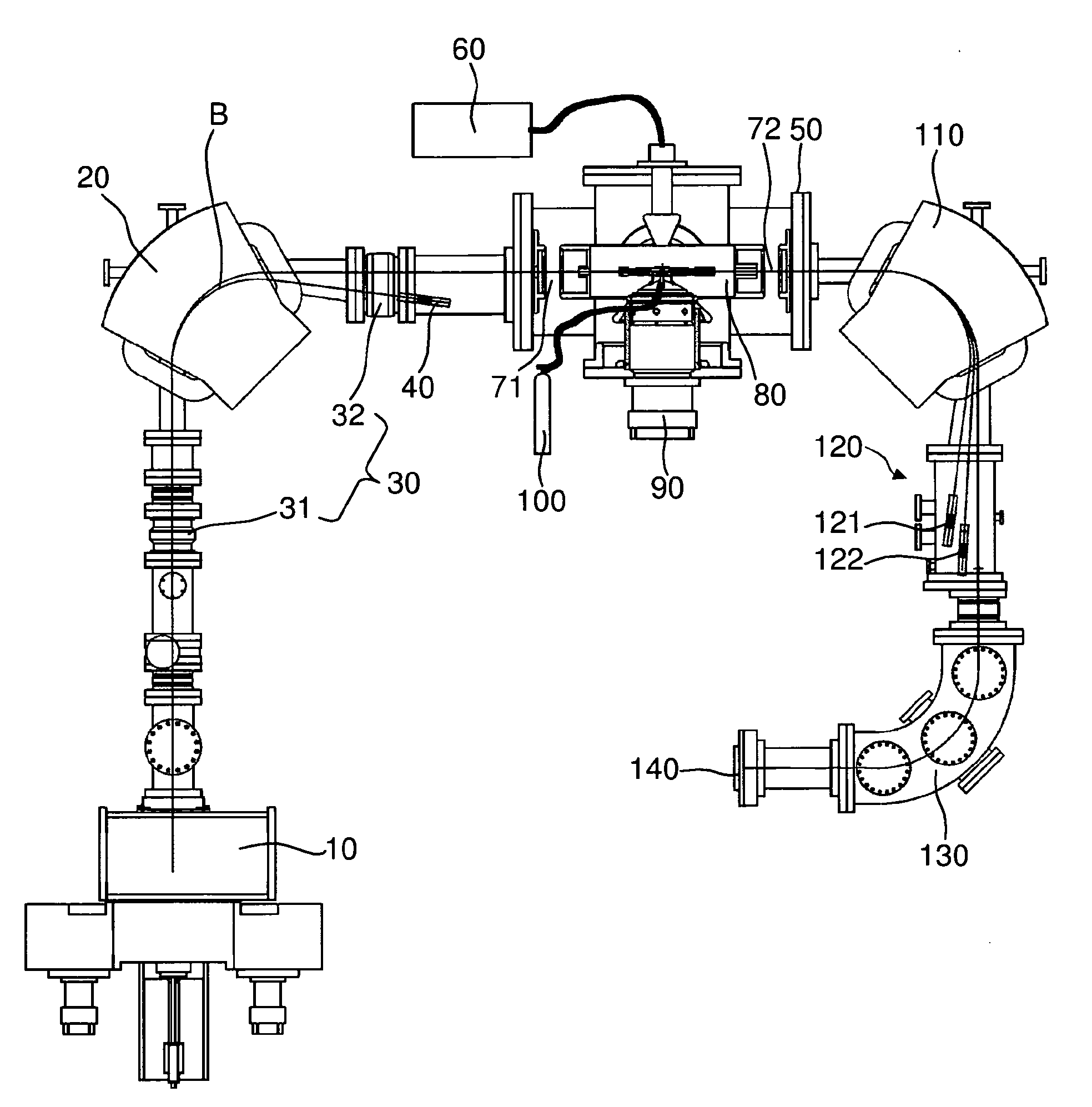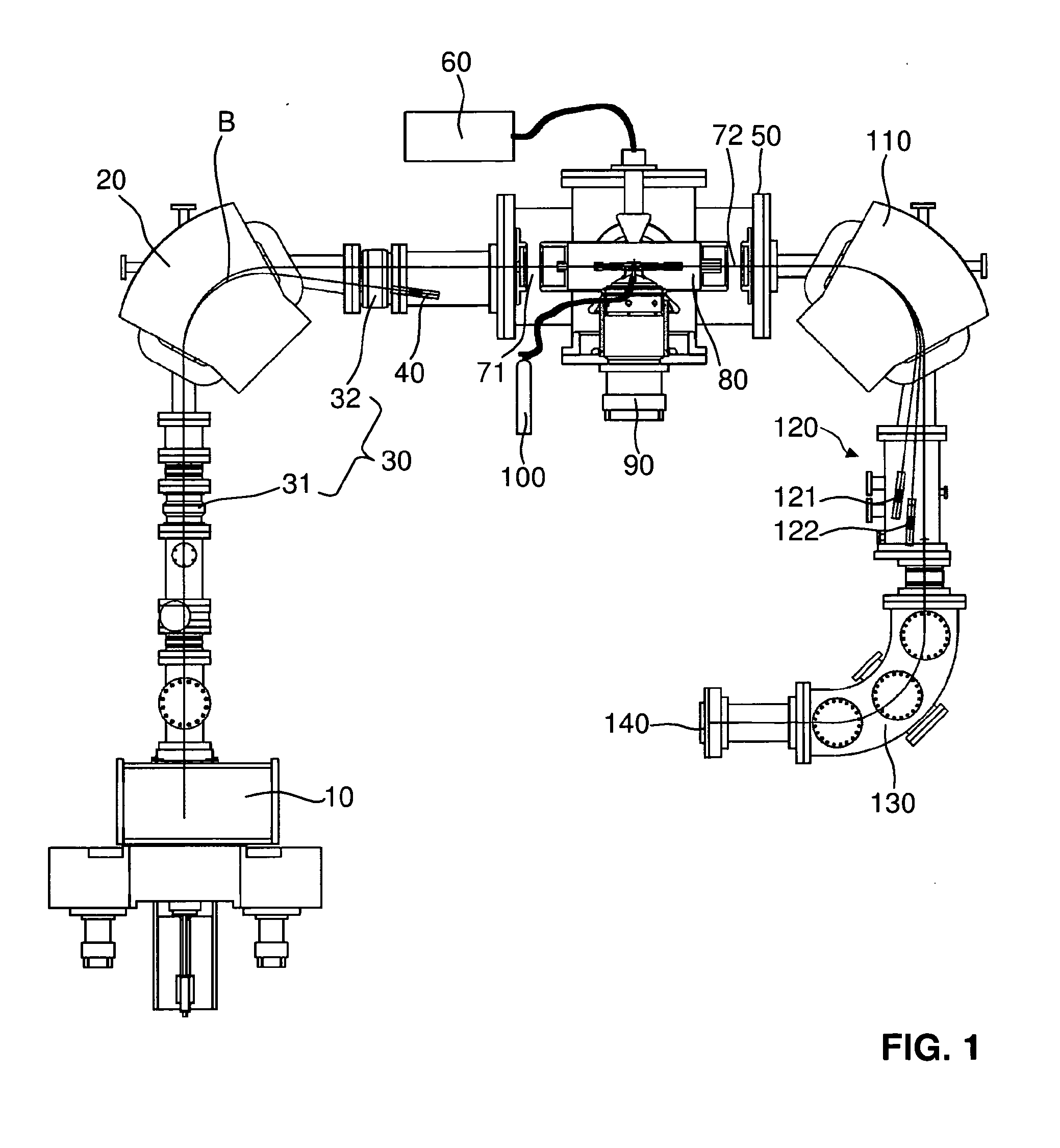Mass spectrometry system with molecular dissociation and associated method
a mass spectrometry and molecular dissociation technology, applied in mass spectrometers, separation processes, dispersed particle separation, etc., can solve the problems of high operating cost, high equipment requirements, and crucial elimination of molecular isobars, so as to reduce the cost, reduce the size of the ion, and reduce the cost
- Summary
- Abstract
- Description
- Claims
- Application Information
AI Technical Summary
Benefits of technology
Problems solved by technology
Method used
Image
Examples
Embodiment Construction
[0063]FIG. 1 illustrates a prototype setup of a compact mass spectrometry system according to a first embodiment of the invention. This prototype is generally very similar to the system described in H. A. Synal, M. Stocker and M. Suter, “MICADAS: A new compact radiocarbon AMS system”, Nucl. Instr. and Meth. B 259 (2007), 7-13. This document will in the following be referenced as the “MICADAS paper”, and explicit reference is made to this document for teaching the general setup and operation of a mass spectrometry system of the type illustrated here. The only notable difference to that document is the use of a much lighter stripping gas than nitrogen.
[0064]An ion source 10 in the form of a Cs sputter ion source generates an ion beam B having an energy up to 40 keV. A first mass analyzer 20 in the form of a 90° dipole sector magnet (bending radius 25 cm) receives the ion beam extracted from the ion source 10. At the focal points before and after the magnet, variable slit apertures are...
PUM
 Login to View More
Login to View More Abstract
Description
Claims
Application Information
 Login to View More
Login to View More - R&D
- Intellectual Property
- Life Sciences
- Materials
- Tech Scout
- Unparalleled Data Quality
- Higher Quality Content
- 60% Fewer Hallucinations
Browse by: Latest US Patents, China's latest patents, Technical Efficacy Thesaurus, Application Domain, Technology Topic, Popular Technical Reports.
© 2025 PatSnap. All rights reserved.Legal|Privacy policy|Modern Slavery Act Transparency Statement|Sitemap|About US| Contact US: help@patsnap.com



